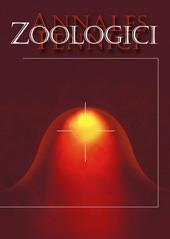Species with highly restricted distributions are vulnerable to extinction, and modification of natural habitats within their small ranges is a primary threat to their persistence. Expansion of urban development significantly impacts natural habitats and, therefore, threatens local diversity. The Mexican axolotl, Ambystoma mexicanum, is a strictly aquatic species that persists currently in two highly threatened and isolated populations. The current habitat remaining for these species are remnants of a historically extensive lacustrine system that occupied the entire Valley of Mexico, but has been destroyed by the growth of Mexico City. Unexpectedly, a third viable population of axolotls has been found in Chapultepec Park, a public recreational area in the heart of Mexico City. Phylogenetic and haplotype network analyses of mitochondrial DNA sequences confirmed low genetic differentiation and a recurrent lack of monophyly in many of the taxa belonging to the Ambystoma tigrinum species group, including A. mexicanum, but clustered the Chapultepec samples with other A. mexicanum samples. Our data revealed higher haplotypic diversity in A. mexicanum populations than previously recorded, due to new haplotypes from Chapultepec Park. We found high incidence of parasites and deformities among individuals in this population, which could negatively impact their viability. Our results emphasize the important role that artificial or semi-natural urban habitats can play in the conservation of highly threatened species.
How to translate text using browser tools
1 August 2010
Urban Aquatic Habitats and Conservation of Highly Endangered Species: The Case of Ambystoma mexicanum (Caudata, Ambystomatidae)
Ernesto Recuero,
Juan Cruzado-Cortes,
Gabriela Parra-Olea,
Kelly R. Zamudio
ACCESS THE FULL ARTICLE

Annales Zoologici Fennici
Vol. 47 • No. 4
August 2010
Vol. 47 • No. 4
August 2010




